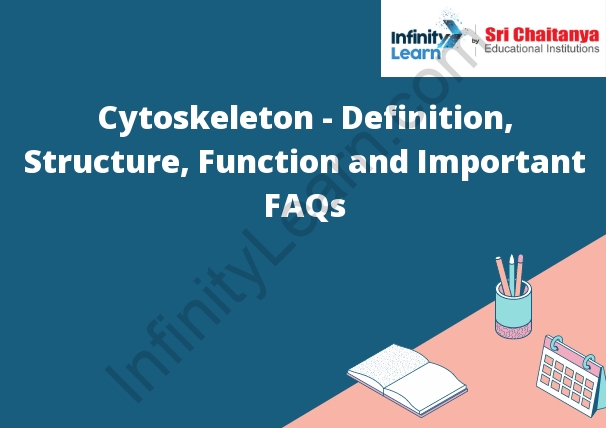Table of Contents
What is Cytoskeleton?
Cytoskeleton – Definition; Cytoskeleton is the cellular scaffolding that helps cells maintain their shape and size. It also helps cells move and divide. The cytoskeleton is made up of proteins that form a network inside the cell.

How is Biology important for the future?
Biology is important for the future because it is the study of life. It is important to understand how life works in order to improve our lives and the lives of future generations. Biology is also important for the future because it is the foundation of many other sciences, including medicine.
More About Cytoskeleton
The cytoskeleton is a network of proteins that helps to maintain the shape and size of cells, and to organize their internal components. It also helps to control the movement of materials in and out of cells. The cytoskeleton is made up of three main types of protein fibers: microfilaments, intermediate filaments, and microtubules.
Cytoskeleton Definition
The cytoskeleton is a dynamic and highly organized system of proteins that makes up the cell’s structural framework. The cytoskeleton is responsible for many cellular functions, including movement, replication, and cell shape. The cytoskeleton is composed of three main types of protein filaments: microfilaments, intermediate filaments, and microtubules.
Cytoskeleton Structure and Function
- The cytoskeleton is a network of protein filaments that extends throughout the cytoplasm of cells. The cytoskeleton provides the cell with structure and support, and also plays a role in cell movement and communication.
- The cytoskeleton is made up of three main types of protein filaments: microtubules, microfilaments, and intermediate filaments. Each type of filament has a specific function in the cell.
- Microtubules are made of the proteins tubulin and play a role in cell movement and division. Microfilaments are made of the proteins actin and control the movement of cells and the movement of organelles within cells. Intermediate filaments are made of the proteins keratin and collagen and provide structural support to cells.
Cytoskeleton Structure
- A cytoskeleton is a network of protein filaments found within cells. The cytoskeleton provides the cell with structural support and helps to organize the cell’s contents. The cytoskeleton also plays a role in cell movement and cell division.
- The cytoskeleton is made up of three main types of protein filaments: microfilaments, intermediate filaments, and microtubules.
- Microfilaments are made up of the proteins actin and myosin. They are the thinnest and most flexible of the cytoskeleton filaments. Microfilaments are involved in cell movement and cell division.
- Intermediate filaments are made up of the proteins keratin, vimentin, and neurofilament. They are thicker than microfilaments and provide structural support to the cell. Intermediate filaments are involved in cell movement and cell division.
- Microtubules are made up of the proteins tubulin. They are the thickest and most rigid of the cytoskeleton filaments. Microtubules are involved in cell movement, cell division, and intracellular transport.
Intermediate Fibers/Intermediate Filaments (IF)
Intermediate fibers are a type of protein filament found in muscle cells. They are also called intermediate filaments, and are made up of the proteins keratin, vimentin, and desmin. These proteins are responsible for the structural support of the cell, and play a role in cell motility.
Cytoskeleton Function
- Cytoskeleton is the term used to describe the internal structure of a cell. The cytoskeleton is responsible for many cell functions, including movement, shape, and division.
- The cytoskeleton is a network of protein filaments that extends throughout the cytoplasm of a cell. The cytoskeleton plays a critical role in many cellular processes, including cell division, movement, and protein trafficking.
- The cytoskeleton is composed of three main types of protein filaments: microtubules, microfilaments, and intermediate filaments. Microtubules are long, hollow tubes made of the protein tubulin. Microfilaments are thin, filamentous proteins made of the proteins actin or myosin. Intermediate filaments are intermediate in size between microtubules and microfilaments, and are made of a variety of proteins, including keratin and vimentin.
- The cytoskeleton serves several important functions in the cell. One of its most important roles is in the cell division process, or mitosis. Microtubules play a critical role in the formation of the mitotic spindle, a structure that pulls the chromosomes apart during mitosis. Microfilaments are also involved in mitosis, helping to move the chromosomes to the correct position.
- The cytoskeleton also plays a role in the movement of cells. Microtubules are responsible for the movement of organelles and other cellular components within the cell. Microfilaments are involved in cell locomotion, the process by which cells move around the body.
- The cytoskeleton also plays a role in the trafficking of proteins within the cell. Proteins are transported from the cell membrane to the interior of the cell by motor proteins that interact with the cytoskeleton. This process is called protein trafficking.
- The cytoskeleton is a critical part of the cell and plays a role in many important cellular processes.








